In contrast to the plateau regions to the north and south of it, Gilead is a mountainous, hilly region. The highest peak reaches 4,090 feet (1,250 m). The region is well watered by rain (24–32 inches [60–80 cm] per year), heavy dew in the summer and springs. Terracing was required for productive farming. Olive trees and vineyards are ideally suited to terraces because they require less space. Wheat could be grown on the lower foothill regions of Gilead. Gilead was rich in balms (Jer 8:22, 46:11) because of the trees (2 Sam 18:8; Jer 8:22).
Upper Gilead
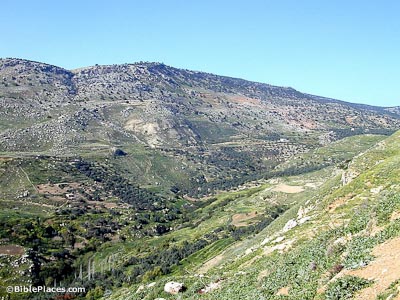
Gilead Mountains
Goats of Gilead
Gilead was heavily forested, and this was an ideal area for grazing animals.
Song of Solomon 6:5 (NIV): “Turn your eyes from me; they overwhelm me. Your hair is like a flock of goats descending from Gilead.”
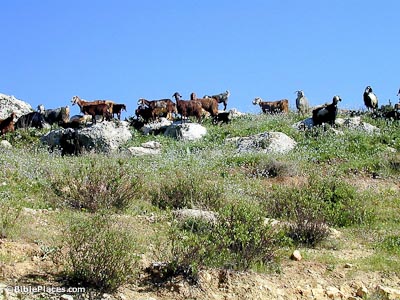
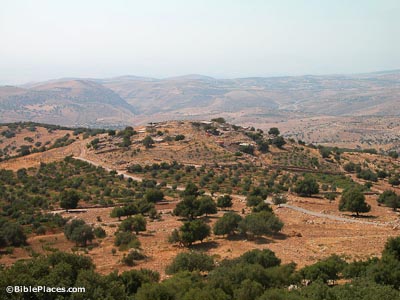
Tishbe, Home of Elijah
The only background given in the Bible of Elijah’s life is that he was from Tishbe in Gilead (1 Kings 17:1). The three candidates for Elijah’s hometown are all in the vicinity of Mar Elias, the Byzantine church that commemorates Elijah’s life. The three candidates are Listib (pictured left), Umm el-Hedamus, and Abu Hummus.
Elijah Inscription
Mar Elias does not preserve the location of Elijah’s hometown itself, but it is the site of a Byzantine monastery remembering the prophet Elijah. The Jordanians have recently excavated this site and found two Byzantine churches. The larger one is from the 6th century AD. The smaller one dates to the 4th–5th centuries AD. This inscription in the Byzantine church mentions Elijah (third line from bottom, right side).
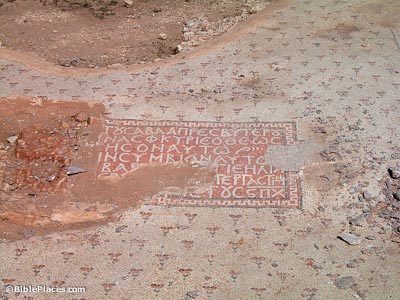
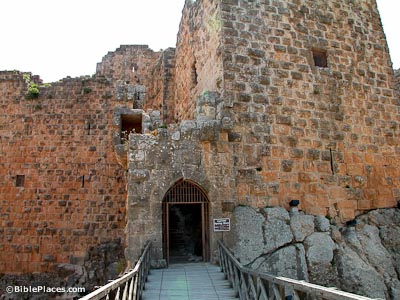
Ajlun Castle
Built by Saladin’s cousin Izz ad-Din Usama a few years before the defeat of the Crusaders in 1187, this castle never faced battle. Unlike many other castles in Jordan and Israel, this castle was built by the Muslims and not the Crusaders. Its situation positioned it opposite the Crusader castle at Belvoir.
Jabesh Gilead
Tell Maqlub is best identified with Jabesh Gilead. Eusebius in his Onomasticon locates Jabesh Gilead in the mountains near the 6th milestone from Pella on the road to Gerasa. This description fits with Tell Maqlub. A surface survey of the site has found Iron Age pottery. In biblical history, Jabesh Gilead is the city where wives were found for the Benjamites (Judg 21:8-12). King Saul’s first military effort was at Jabesh Gilead where he defeated the Ammonites and saved the city (1 Sam 11:1-11). After Saul’s body was hung on the walls of Beth Shean, the men of Jabesh Gilead retrieved and buried it here (1 Sam 31:8-13).
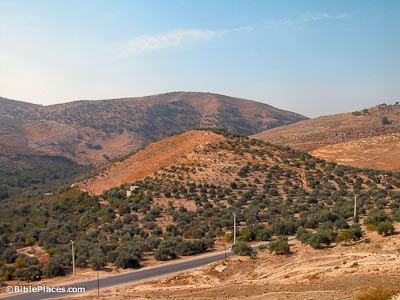

Download all of our Jordan photos!
$34.00 $49.99 FREE SHIPPING
Related Websites
For historical images of grain harvest, olive harvest, and vineyards, see Life in the Holy Land.
Gilead (Encyclopedia Judaica) This article offers an excellent overview of the region.
Perea/Gilead (Jewish Virtual Library) A summary of the region and its history that includes New Testament events.
Balm of Gilead (Wikipedia) This page summarizes references to the balm across ancient sources, and it also discusses several plants which have been proposed as the primary ingredient.
Why There May Be No Balm in Gilead (Old Dominion University) Suggests that the cistus plant is the biblical balm of Gilead. Provides a detailed discussion and pictures.
A Balm in Gilead – Your Solution is Nearer than You Imagine (Wayne Stiles) An encouraging article looking at the geography of the region of Gilead and Jeremiah 8:22, including several photos and maps.
Mar Elias Monastery aerial view (YouTube) This brief video gives a nice look from above at the monastery near Elijah’s home.
Ajloun Castle (Universes in Universe) Informative summary of the Ajlun castle and its history.
Jabesh Gilead (Bible History) Included here for the clear and helpful map it presents.
Jabesh-Gilead (Encyclopedia of the Bible) Brief location profile along with a discussion of the site’s biblical significance.